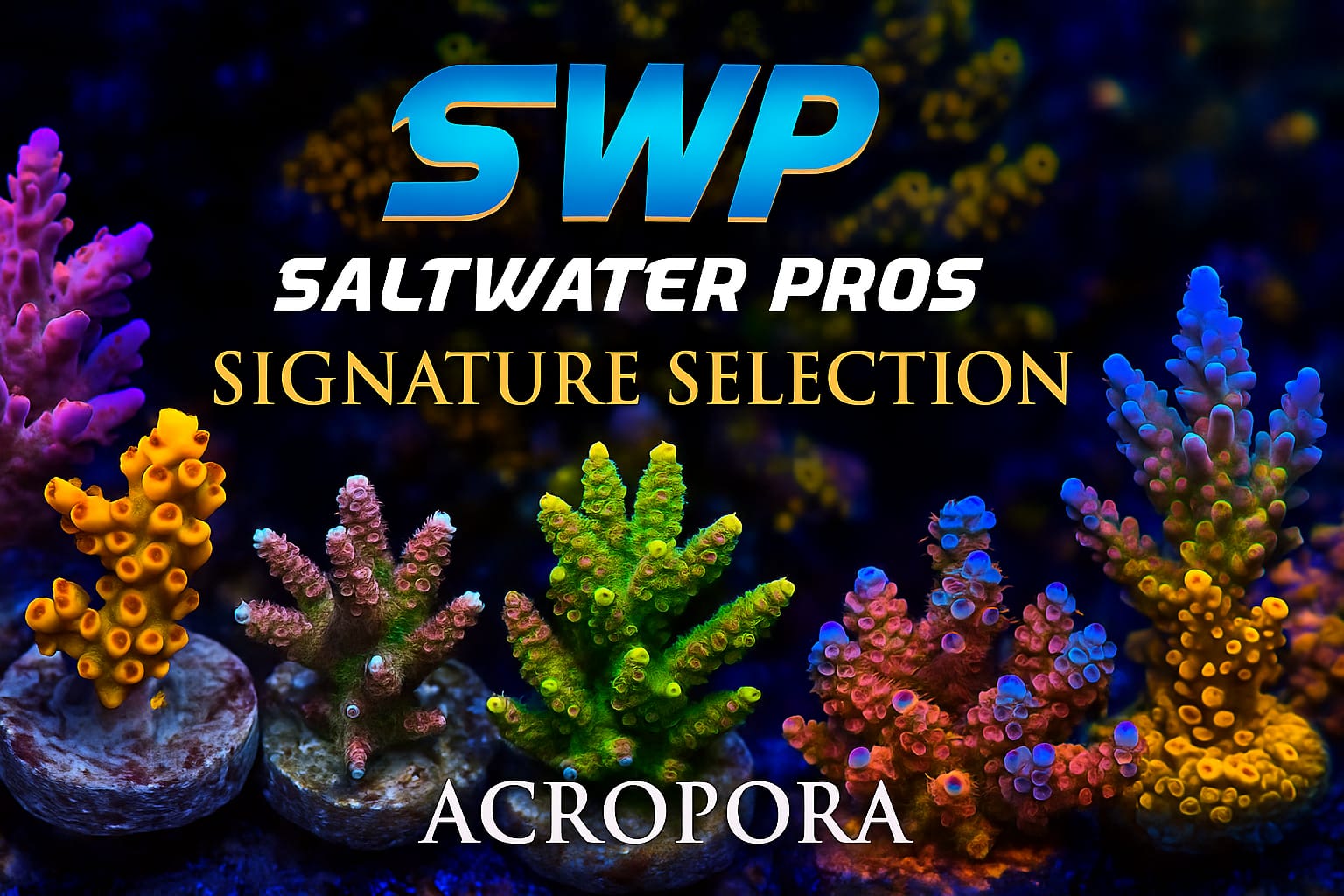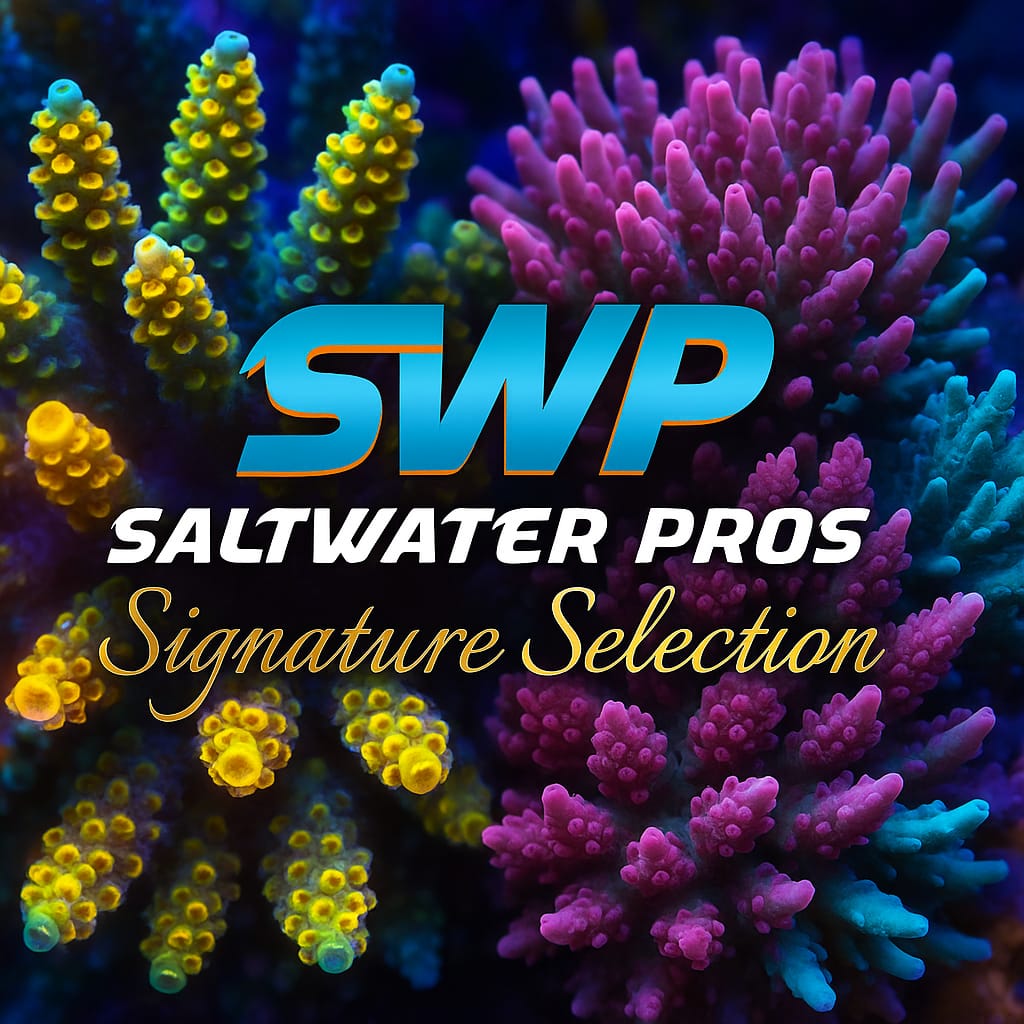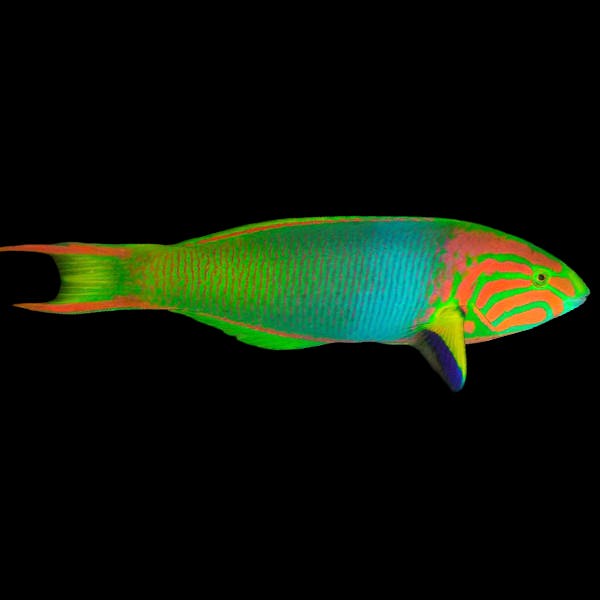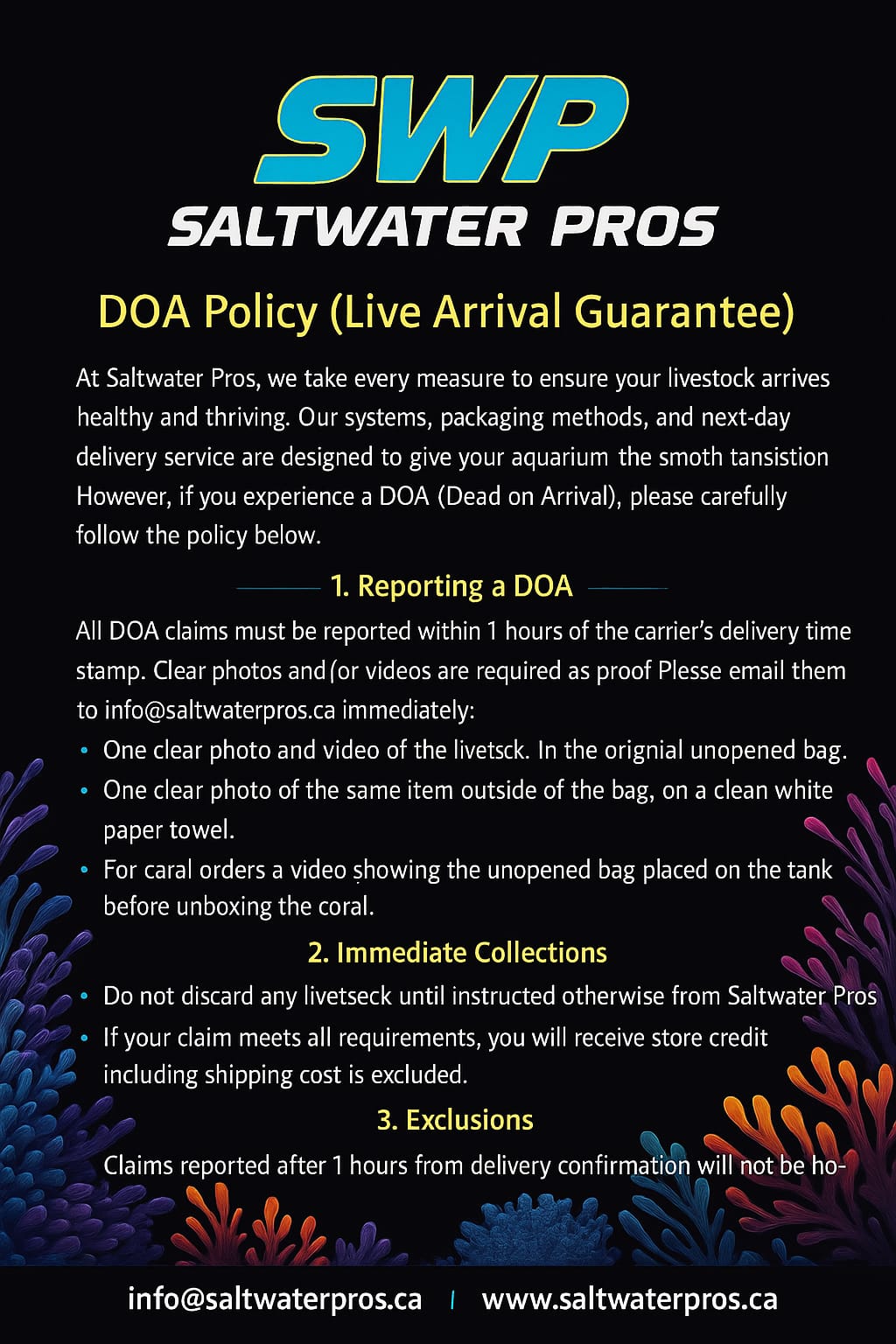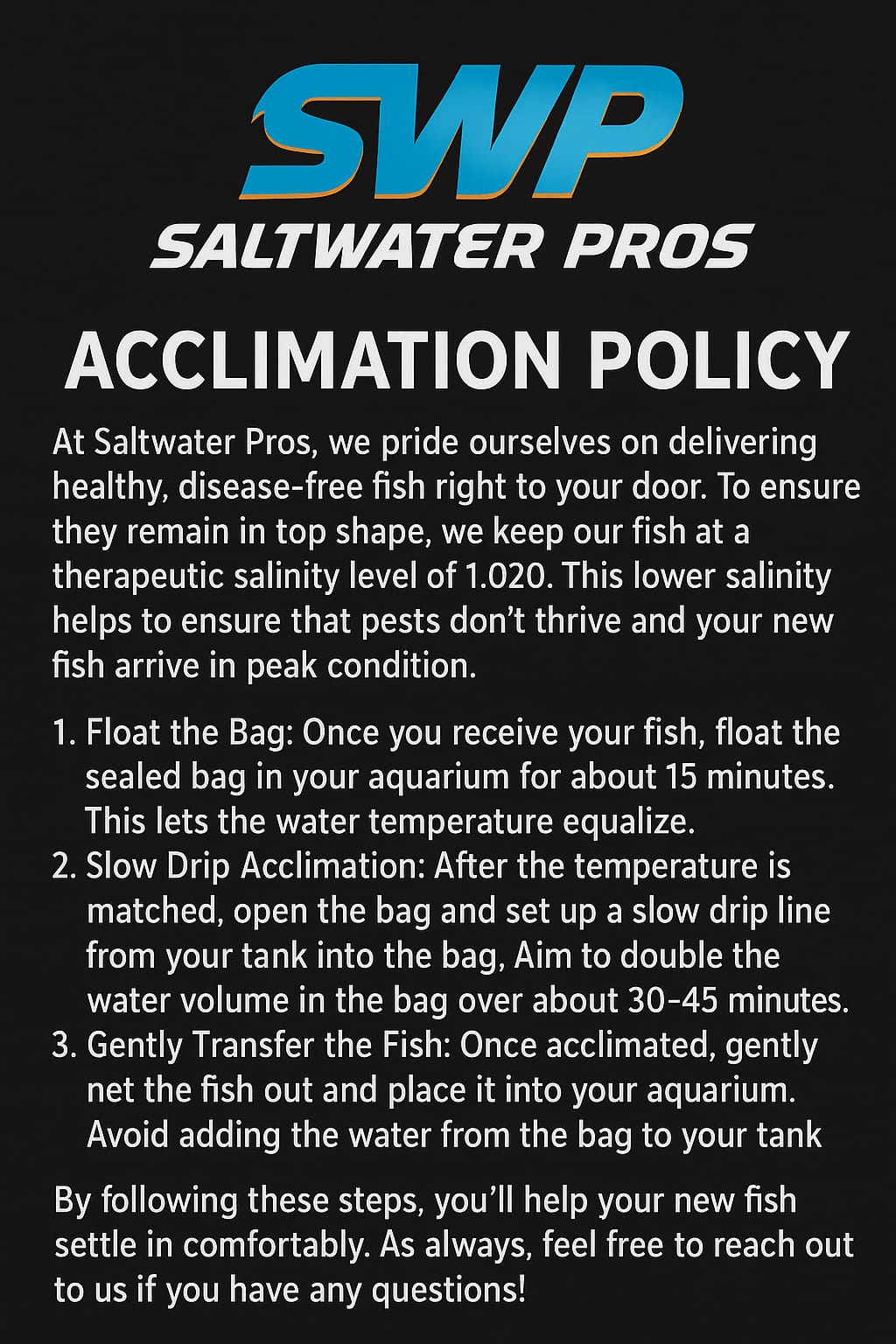Description
Click HERE to read our Dead On Arrival (DOA) policy.
Click HERE for how to acclimate the fish.
The Moon Wrasse (Thalassoma lunare) is a colourful and active species of wrasse commonly found in the Indo-Pacific region. Here's a detailed description:
- Coloration: The Moon Wrasse is known for its vibrant colours. The body is typically bright green or blue, with striking blue, yellow, and purple horizontal bands. The colours are most vivid in males.
- Fins: The dorsal and anal fins are long and extend along much of the body's length, often showing a bright blue edging. The caudal (tail) fin is crescent-shaped, a distinguishing feature that gives the fish its common name, "Moon Wrasse".
- Size: They can grow up to 25 cm (about 10 inches) in length.
- Environment: They inhabit coral reefs and lagoon areas, usually at depths of 1 to 20 meters (3 to 65 feet). They prefer environments with abundant coral and rocky substrates where they can find food and shelter.
- Behaviour: Moon Wrasses are diurnal, active during the day. They are known for their energetic swimming and are often seen darting around the reef. They can be territorial and behave aggressively towards other fish, especially smaller or more docile species.
- Diet: Their diet mainly consists of small invertebrates, including crustaceans, mollusks, and worms. They use their sharp teeth to pick food from crevices in the coral.
- Tank Requirements: They require a large tank, ideally over 100 gallons, with plenty of live rock for hiding and grazing. They need open swimming space due to their active nature.
- Compatibility: Moon Wrasses can be kept with other robust fish but may bully smaller or less aggressive tank mates. They are generally not reef-safe, as they may nip at corals and other invertebrates.
The Moon Wrasse is a visually stunning and dynamic addition to large marine aquariums, appreciated for its bright colours and lively behaviour. Proper care and attention to their dietary and environmental needs are essential for keeping these fish healthy in captivity.
- Care level: Moderate
- Temperament: Aggressive
- Diet: Carnivore
- Reef Compatible: No
- Family: Labridae
-
Minimum Tank Size: 90 gallons
-
Size: Medium: 2" to 3"

